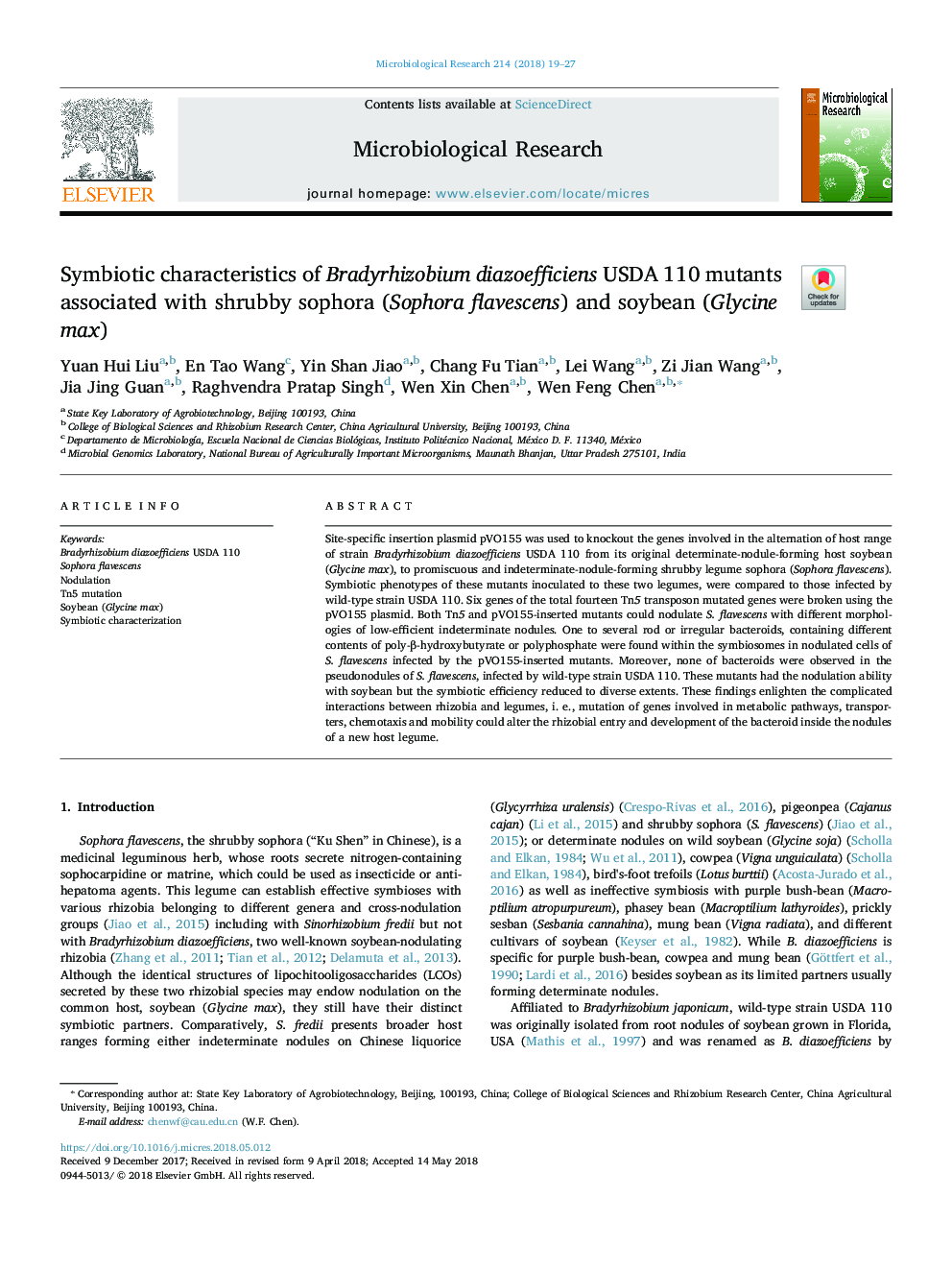| Article ID | Journal | Published Year | Pages | File Type |
|---|---|---|---|---|
| 8422684 | Microbiological Research | 2018 | 9 Pages |
Abstract
Site-specific insertion plasmid pVO155 was used to knockout the genes involved in the alternation of host range of strain Bradyrhizobium diazoefficiens USDA 110 from its original determinate-nodule-forming host soybean (Glycine max), to promiscuous and indeterminate-nodule-forming shrubby legume sophora (Sophora flavescens). Symbiotic phenotypes of these mutants inoculated to these two legumes, were compared to those infected by wild-type strain USDA 110. Six genes of the total fourteen Tn5 transposon mutated genes were broken using the pVO155 plasmid. Both Tn5 and pVO155-inserted mutants could nodulate S. flavescens with different morphologies of low-efficient indeterminate nodules. One to several rod or irregular bacteroids, containing different contents of poly-β-hydroxybutyrate or polyphosphate were found within the symbiosomes in nodulated cells of S. flavescens infected by the pVO155-inserted mutants. Moreover, none of bacteroids were observed in the pseudonodules of S. flavescens, infected by wild-type strain USDA 110. These mutants had the nodulation ability with soybean but the symbiotic efficiency reduced to diverse extents. These findings enlighten the complicated interactions between rhizobia and legumes, i. e., mutation of genes involved in metabolic pathways, transporters, chemotaxis and mobility could alter the rhizobial entry and development of the bacteroid inside the nodules of a new host legume.
Related Topics
Life Sciences
Biochemistry, Genetics and Molecular Biology
Biotechnology
Authors
Yuan Hui Liu, En Tao Wang, Yin Shan Jiao, Chang Fu Tian, Lei Wang, Zi Jian Wang, Jia Jing Guan, Raghvendra Pratap Singh, Wen Xin Chen, Wen Feng Chen,
